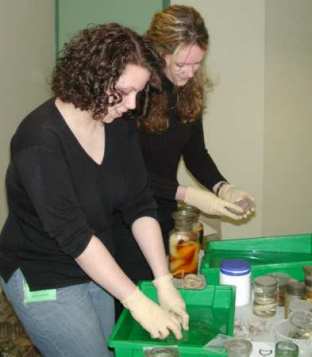Some examples of courses delivered in the last few years (only a fraction of them!)
Training in the Conservation of Fossil and Geological Material
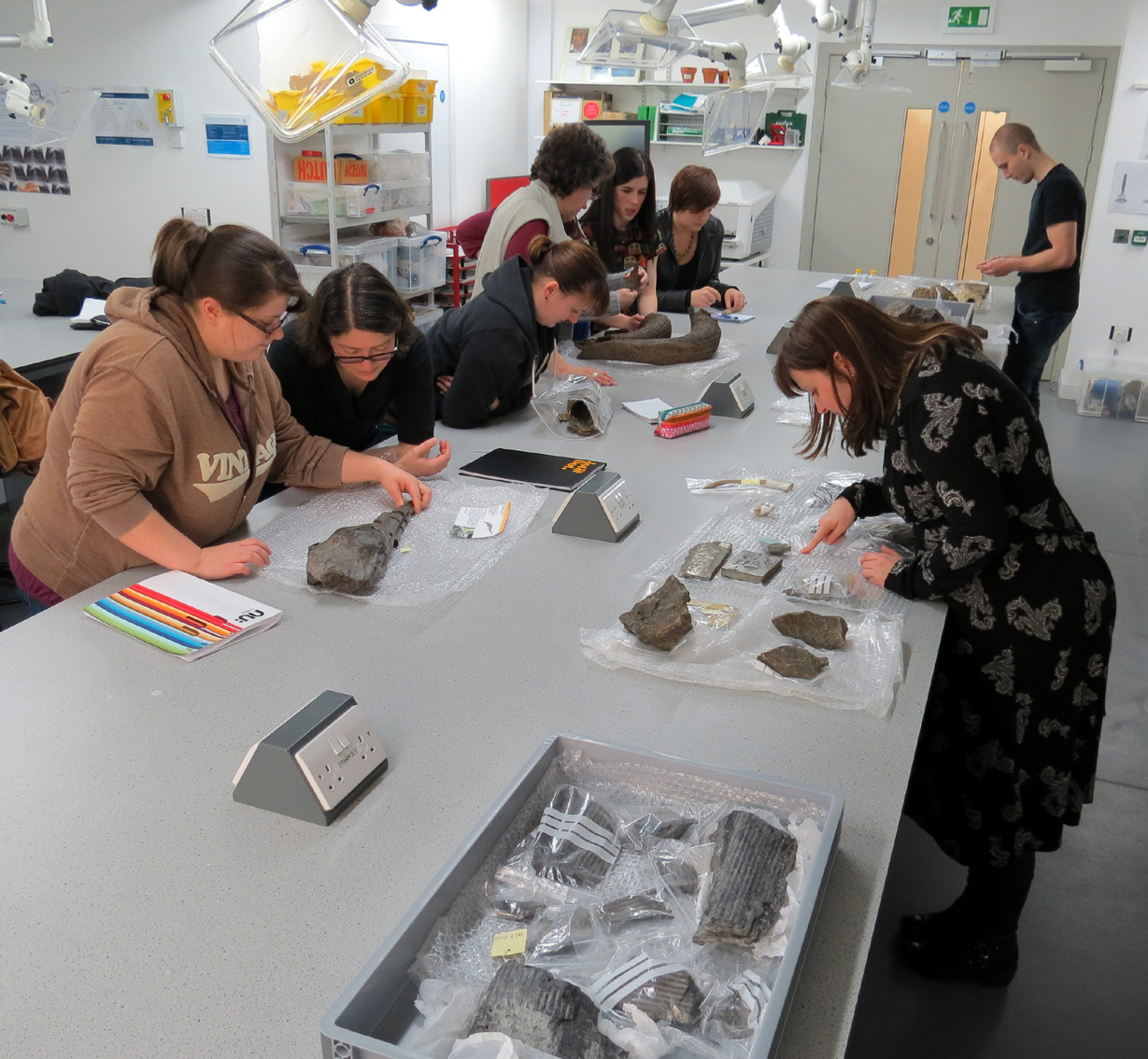 This can be run as a half day course, a full day course or a two-day course.
This can be run as a half day course, a full day course or a two-day course.
The full day course allows an opportunity for some hands-on work. Obviously it can be delivered with a lot more detail and practical hands-on
experience if run as a two-day course. The course covers the following topics (adaptable by request):
o Preventive conservation:
- Environment
- Handling
- Storage
- Transport
o Remedial conservation:
- Recognising different types of damage
- Cleaning specimens
- Repairing specimens
- Pyrite decay issues
o The preparation of fossils
o Health and safety in geological collections
o Practical session – looking at specimens requiring conservation
Workshop: Appropriate methods for packing and transporting natural history specimens and whole natural history collections
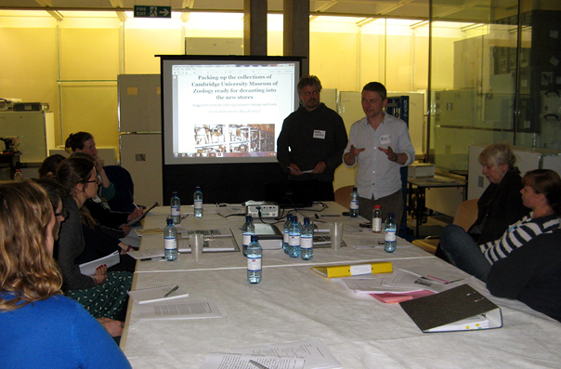 This one-day workshop (for SHARE East) was held in May 2014 at Cambridge University's Museum of Zoology,
during the packing phase of their decant and refurbishment programme (with help from museum staff Matt, Natalie and Vicky).
This one-day workshop (for SHARE East) was held in May 2014 at Cambridge University's Museum of Zoology,
during the packing phase of their decant and refurbishment programme (with help from museum staff Matt, Natalie and Vicky).
Content:
Collection scale
Health and safety issues specific to natural history collections
How do you assess the packing and transportation needs of a whole collection full of diverse material?
Case studies:
- Colchester and Ipswich Museums' natural history stores
- Lapworth Museum of Geology
- Cambridge Museum of Zoology
Moving whole collections: labelling, documentation, transport, staffing, security etc.
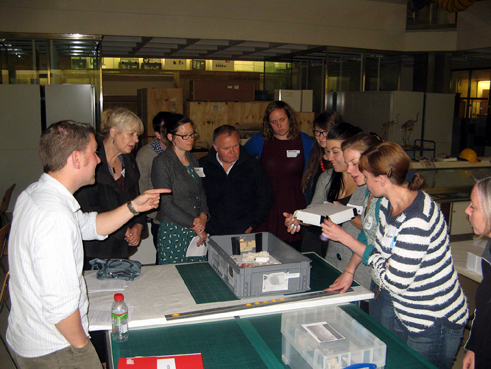
Individual specimen scale
Packing and moving articulated skeletons (from hummingbirds to finback whales)
Packing and moving fossils, molluscs, skins, taxidermy and fluid-preserved specimens etc.
This workshop was not held in an office revolving solely around powerpoint presentations but involved discussions, watching work in progress, handling specimens
and taking a tour of all the Zoology Museum stores to see work in progress as staff and volunteers assessed, documented, cleaned and packed
4,000,000 specimens ready to be moved into new stores.
Fluid Preservation Course, 1st to 4th of November 2010.
At: The Horniman Public Museum & Public Park Trust, 100 London Road, London, SE23 3PQ. UK.
Schedule:
Day 1.
10.00 start. Introduction (incl. local logistics, fire-exits, risks, allergies).
Power-point 1: overview of course technology and histological effects of fluid preservation.
Questions and tea-break, discussion about the importance of fluid collections, fixation versus pseudo-fixation.
Compounding of sealant/s (gelatine, Acrifix, bitumen)
Glass cutting, grinding, drilling demonstrations and participation (demonstration & practical)
Rehydrations started (d & p)
Relevance of injecting fresh material with fixative
13.00 - 14.00. Lunch.
Preparation of jars (checking, grinding out blemishes – d & p)
Dehydration/ Hydration ladders start (d & p)
Thread mounting of specimens (d & p).
Celloidin mounting of snails to specimens and labels (d & p)
Check rehydrating specimens and fix + inject if they are ready, else leave (unheated) overnight (d & p).
Finish 1700.
Day 2.
09.00 start. Power-point 2: narcotisation, historical sealants, pelagic (jellyfish) mounts, botanical preservatives.
Check of previous day’s work, analyse and correct problems. Move specimens in ladders (d & p)
Changing fluids in sealed jars (d & p).
Making glass needles and their use in specimen repair (d & p)
Celloidin specimen repair (d & p)
Releasing vacuum in Visijars (talk if none available)
Thread mounting of specimens (continuation) including jellyfish on acetate discs (d & p).
13.00 – 14.00 Lunch.
Move specimens in ladders (d & p)
Unsealing jars containing specimens requiring treatment (d & p)
Other types of sealant including historical sealants (d only)
Sealing of jars that are ready (d & p)
Finish 1700.
Day 3.
09.00 start. Power-point 3: preservatives, lipids, copper wire staining
Checking of previous day’s seals (d & p).
Assessing problems: evaporation and dilution
What has happened if your Hirst is ‘off-colour’?
Dealing with lipids and other contaminants including fungal growth
Copper salts staining specimens, from being mounted on copper wire.
Detecting preserving fluids and auto-dilution problems: use of map pins and Dries van Dam’s ‘pills’ - Making your own specific gravity detector (d & p)
Which preservatives should you use? (on hand-outs)
Problems of mixing fluids (exothermic due to binary azeotropy and leading to air bubble formation).
Buffering and pH levels (d & p).
13.00 - 14.00. Lunch.
How to deal with air bubbles, especially those trapped inside rehydrated specimens; (small portable vacuum pump required: d & p)
Stretching polypropylene rod (Bunsen burner/s required: d & p)
Topping up sealed jars, ‘corking’ and sealing.
Checking for problems and why they may have occurred.
Day 4.
09.00 start. Power-point 4: Transparencies, labels, tubes in jars, jar types, storage areas. Maybe transporting and posting loan specimens if time allows.
Check of nearly-finished jars, are they leaking? If so, why, what has caused this – understanding how and why problems can occur and why deadlines can be difficult to meet! (d & p).
Dealing with transparencies – keeping fluids including glycerol, propylene glycol, methyl benzoate and turpentine and problems associated with these.
Sending fluid-preserved specimens by post or courier, worldwide policies changing year to year.
Which jars are best for your collection?
How to store such collections so that they need minimum monitoring and maintenance.
Labels and their problems, which paper/s to use. Internal or external labels?
13.00 - 14.00. Lunch.
Tubes in jars – how to seal, invert or not?
Storage areas. Plastination – ethics.
- 16.00 - Time overspill & Final questions.
- Depart
Simon Moore gave a Fluid Preservation course at the Sedgwick Museum's Brighton Building,
Madingley Road, Cambridge from the 7th to 10th of June 2010.
Participants learnt about the effects of fluid fixatives and preservatives on,
largely, zoological and botanical materials. Most of the course was practical,
given over to repairing specimens that had decayed, collapsed and/or dried out etc.
Also, time was spent on jar comparisons and sealing techniques, together with tips for fluid analysis,
and specific problem analysis.
COURSES DELIVERED IN 2008:
Simon Moore delivered several Fluid Preservation courses in 2008 in locations as far afield as Norwich
Castle Museum, Trinity College Dublin and Museum d’Histoire Naturelle Paris.
Each course was fully subscribed, training between 10 and15 participants each time.
Below are some photographs of course participants:
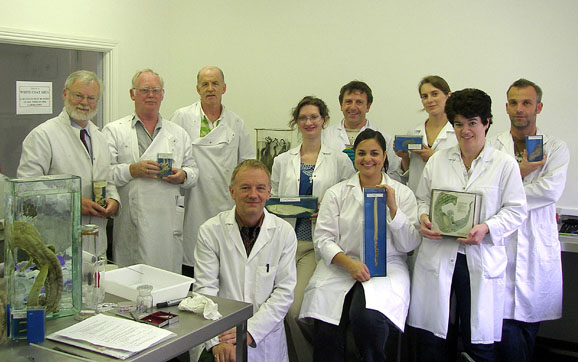

Nigel Larkin delivered a couple of pracical workshops in 2008 showing curators How to Mould and Cast Museum
Specimens.
This was for the Renaissance in the East Natural History Collections
Project:
Care of Natural History Collections – practical workshops for
curators.
It was delivered at the Shirehall Study Centre, Norwich Castle Museum on
4th November 2008 - and repeated on 5th
November due to demand.
This was a one-day
practical workshop (repeated the next day due to demand) covering aspects of
moulding and casting museum objects. Aimed primarily at Natural Science
curators, this workshop may also be of interest to archaeologists, conservators
and display technicians.
It was led by Nigel Larkin, who has many years
experience in palaeontological conservation and making replicas for research and
display.
All materials, information sheets, refreshments and lunch were
included in the cost.
After a presentation outlining moulding and casting
techniques including conservation aspects and preparing specimens for the
moulding process and further conservation applications of using the moulding and
casting products, the participants undertook practical sessions laying-up
specimens, making moulds and producing casts. This included discussions
comparing the various techniques and materials available and the health and
safety aspects of the various materials. Participants took home the casts they
made, along with a variety of information sheets and relevant manufacturers
catalogues. This course can be lengthened to two days or more to give
participants more time to get used to the technique and to try more materials.
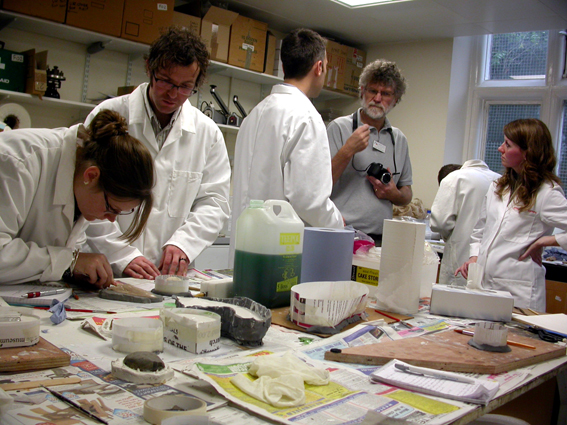
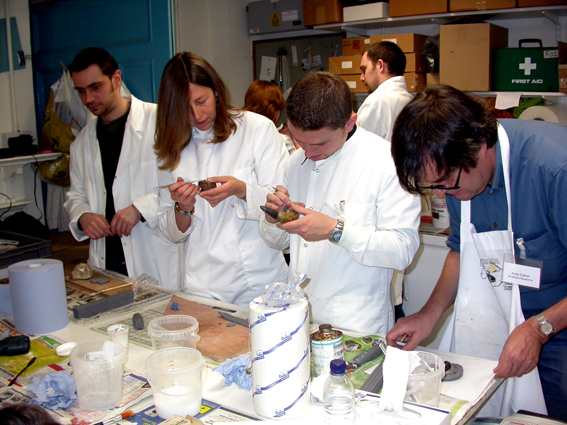
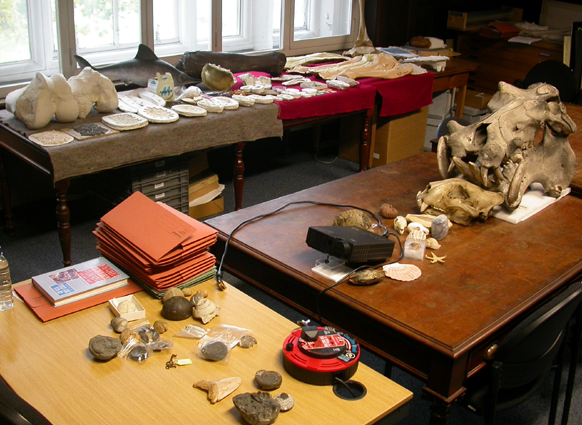
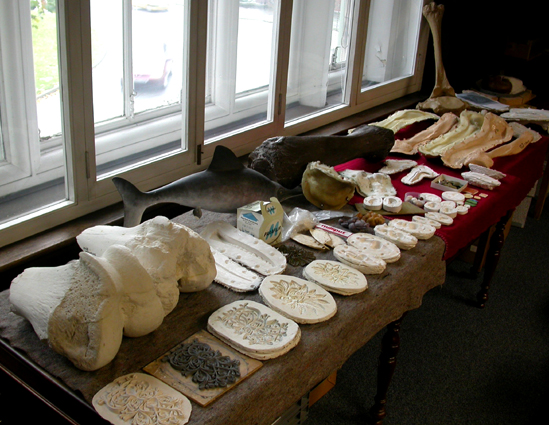

We can create courses specifically tailored to your needs and your
staff. Most courses run for a day or two, and courses can be combined.
Example: A one-day course on the conservation of
fluid-preserved specimens:
Course content:
Talk on the biomechanics of fixation and preservation
Review of re-hydrating agents
Discussion on the latest types of jars and fluids available
Discussion on caring for collections and moving collections
Practical demonstrations on all aspects of fluid preservation and
re-hydration techniques, including sealing of all types of jar and specimen
repair.
 We provide training
courses on the following subjects:
We provide training
courses on the following subjects: We provide training
courses on the following subjects:
We provide training
courses on the following subjects:
 This can be run as a half day course, a full day course or a two-day course.
This can be run as a half day course, a full day course or a two-day course.  This one-day workshop (for SHARE East) was held in May 2014 at Cambridge University's Museum of Zoology,
during the packing phase of their decant and refurbishment programme (with help from museum staff Matt, Natalie and Vicky).
This one-day workshop (for SHARE East) was held in May 2014 at Cambridge University's Museum of Zoology,
during the packing phase of their decant and refurbishment programme (with help from museum staff Matt, Natalie and Vicky).








 2,
2,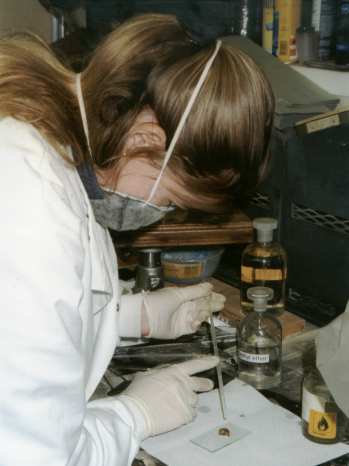 3,
3,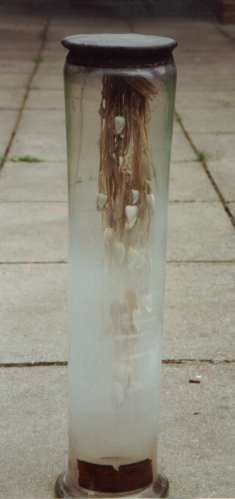 4,
4,
